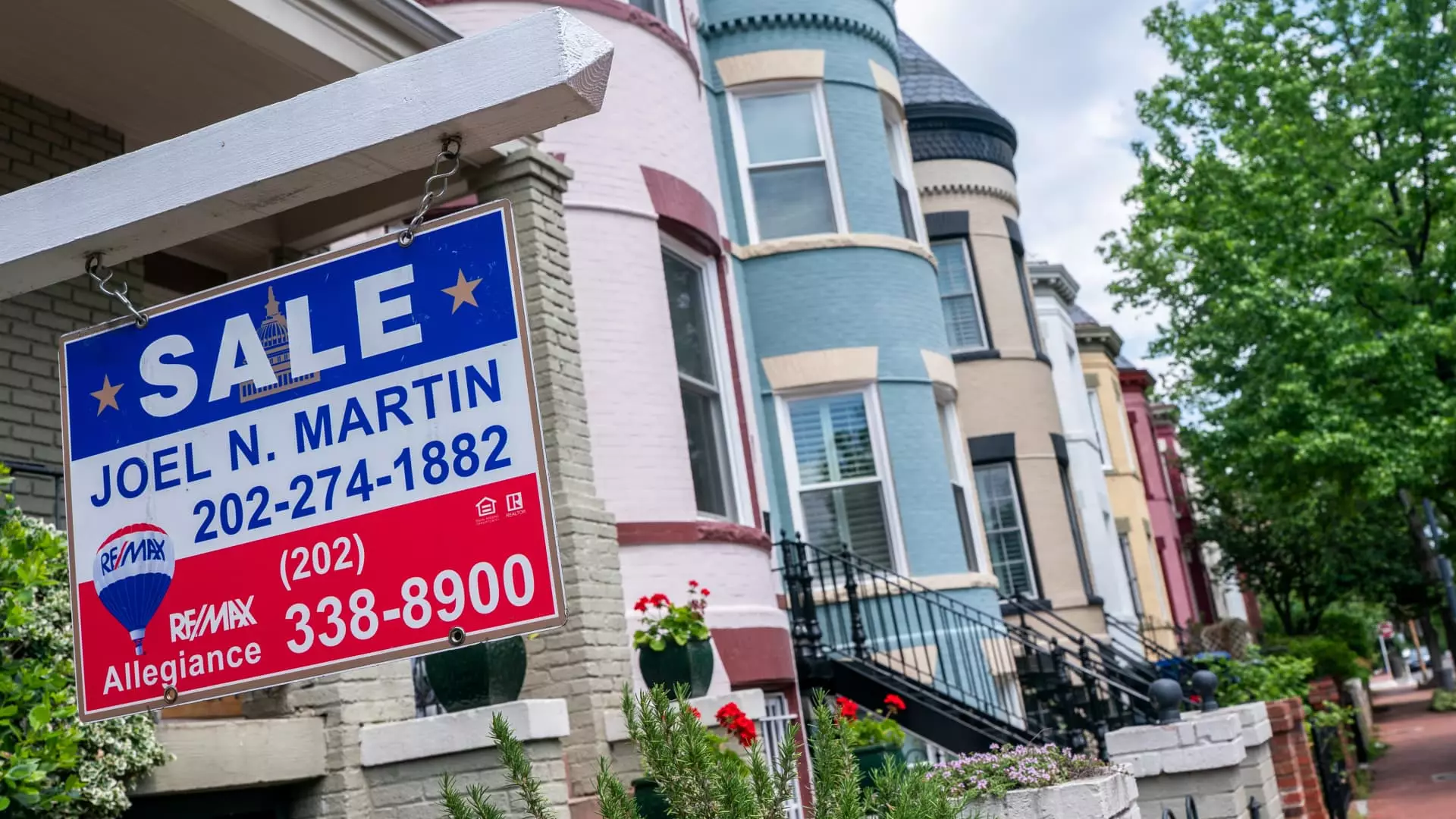The spring housing market is facing an existential crisis. Contrary to expectations, home sales have taken a downward plunge, highlighting a dismal reality that has many prospective buyers scratching their heads in frustration. According to the National Association of Realtors (NAR), sales of previously owned homes fell by 0.5% in April from March, landing at an annualized rate of just 4 million units. This is the slowest April since 2009—a stark reminder of a market grappling with inflated hopes yet grounded in harsh realities. With a year-over-year decline of 2% and a missed forecast that predicted a modest gain of 2.7%, the current state of housing reflects an unsettling trend of stagnation.
The crux of the issue seems to be soaring interest rates coupled with dwindling consumer confidence. Lawrence Yun, the chief economist at NAR, underscored the troubling predicament, stating that home sales have hovered around 75% of pre-pandemic activity over the past three years. Despite the addition of seven million jobs to the economy during this period, it appears that a sense of urgency to purchase homes has dissipated. The pent-up demand for housing exists but lies trapped, awaiting a shift in mortgage rates that appears agonizingly out of reach. This scenario paints a picture of frustration and lost opportunity, threatening the very fabric of the American dream that homeownership represents.
Rising Inventory: A Double-Edged Sword
As inventory levels rise—a 9% increase month-on-month and a staggering 21% from last year—one might assume that this would alleviate some pressure on consumers. While the current supply of 1.45 million homes for sale represents a slight reprieve for buyers, it does not equate to a balanced market; industry standards suggest that a six-month supply would signify stability. The increased inventory has slightly cooled housing prices, with the median home price in April reaching $414,000—an increase of only 1.8% from last year, the slowest growth since last July. While this is the highest April price on record, it underscores how prices have lost their upward momentum and the soaring expectations of homeowners are being nipped in the bud, leaving a bitter aftertaste.
This dynamic creates a confusing paradox where buyers are slightly better positioned to negotiate, yet economic uncertainty looms large. The market must reconsider the ramifications of a surplus in inventory against the backdrop of declining buyer confidence. Are we witnessing a temporary reprieve, or is this the beginning of a larger trend towards affordability after years of runaway price growth? The answer remains obscured as buyers continue to deliberate.
First-Time Buyers on the Brink
First-time buyers, who accounted for 34% of sales in April, mirror this confusion—almost unchanged from last year, yet increasingly disenfranchised by the worsening market conditions. Many aspiring homeowners face overwhelming challenges such as rising cancellation rates, which have surged to 7%. This upswing in cancellations starkly contrasts with the recent averages of 3% to 4%, indicating that buyer hesitation is not merely a passing phase; it’s a deep-rooted fear due to financial uncertainties and inflated market expectations.
More concerning is how this trend intersects with the performance of homes in different price brackets. Sales of luxury homes priced over $1 million have reportedly risen by nearly 6%, while the sale of more affordable homes (priced between $100,000 and $250,000) has seen a decline of just over 4%. The affluent segment of the market has been buoyed, yet this surge casts a shadow over the realities faced by less affluent buyers. With the economy still facing turmoil from stock market fluctuations, these differences seem increasingly unjust, especially when the underlying issues are rooted in policy failures that fail to address housing crises for average citizens.
Hope on the Horizon or a Mirage?
As we decipher these market trends, an unsettling question arises: is there hope for a recovery, or are we merely witnessing a mirage of optimism? The lull in buyer activity suggests that many consumers are waiting, perhaps indefinitely, for a sign that the winds are shifting. Economic rejuvenation must intersect with meaningful reforms in housing policy to revitalize a market mired in despair.
The current housing landscape paints a bleak picture that requires urgent attention. It is imperative for policymakers to re-examine not only interest rates but the broader implications of housing supply, consumer protection, and affordability. If we fail to address these issues, the American dream of homeownership may slip further from reach for many aspiring buyers, leaving them trapped in a cycle of inaction and disappointment.

